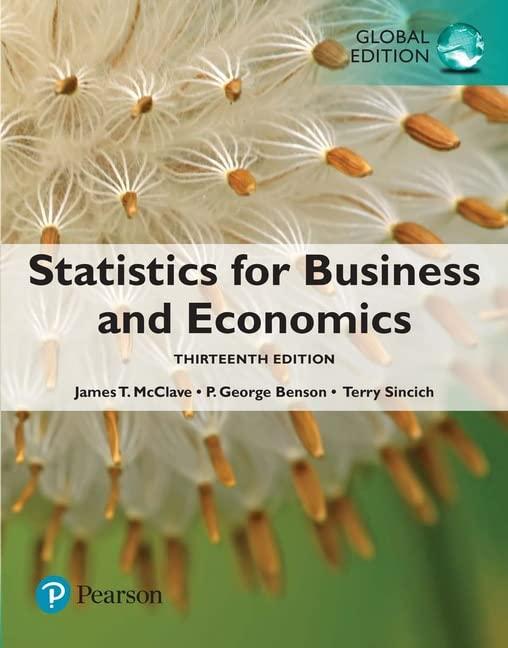Bank of America has a savings program called Keep the Change. Each time a customer enrolled in
Question:
Bank of America has a savings program called Keep the Change. Each time a customer enrolled in the program uses his or her debit card to make a purchase, the difference between the purchase total and the next higher dollar amount is transferred from the customer’s checking account to a savings account. For example, if you were enrolled in the program and used your debit card to purchase a latte for $3.75, then $0.25 would be transferred from your checking to your savings account. For the first 90 days that a customer is enrolled in the program, Bank of America matches the amounts transferred up to $250. In this and subsequent activities, we will investigate the potential benefit to the customer and cost to the bank.
1. Simulate the program by keeping track of all purchases that you make during one week that could be made with a debit card, even if you use a different form of payment.
For each purchase, record both the purchase total and the amount that would be transferred from checking to savings with the Keep the Change program.
2. You now have two sets of data: Purchase Totals and Amounts Transferred. Both sets contain quantitative data.
For each data set, identify the corresponding naturally occurring numerical scale. Explain why each set has an obvious lower bound but only one set has a definite upper bound.
3. Find the total of the amounts transferred for the one-week period. Because 90 days is approximately 13 weeks, multiply the total by 13 to estimate how much the bank would have to match during the first 90 days. Form a third data set, Bank Matching, by collecting the 90-day estimates of all the students in your class. Identify the naturally occurring scale, including bounds, for this set of data.
Keep the data sets from this activity for use in other activities.
Step by Step Answer:

Statistics For Business And Economics
ISBN: 9781292227085
13th Global Edition
Authors: Terry Sincich James Mcclave, P. George Benson





